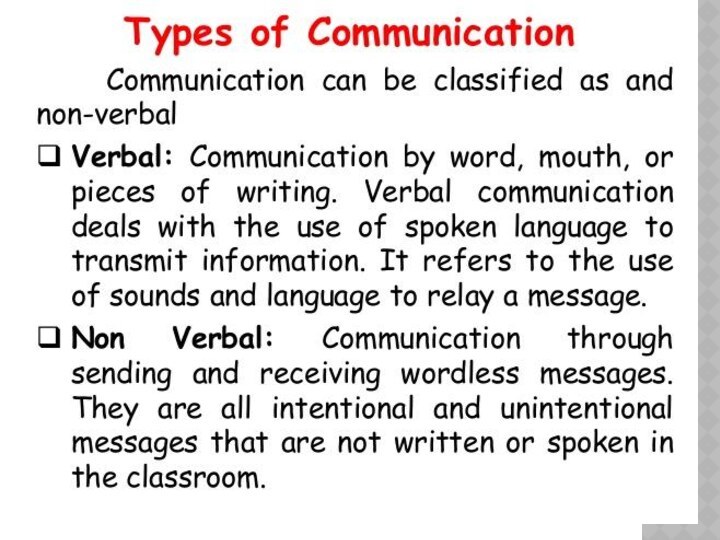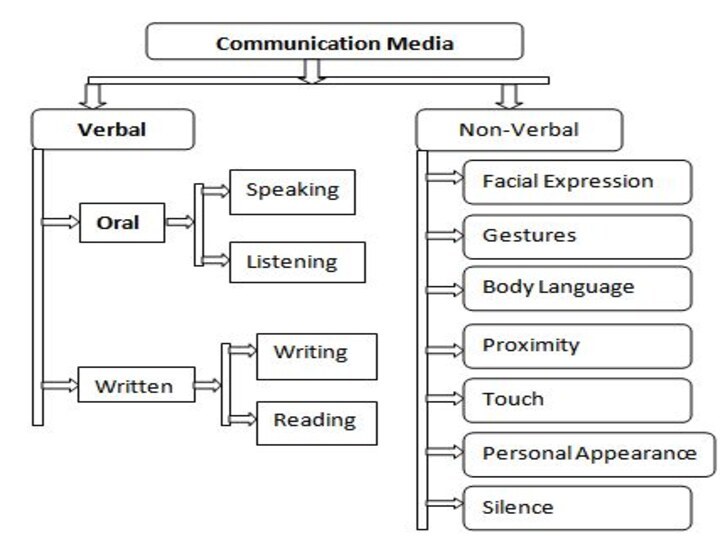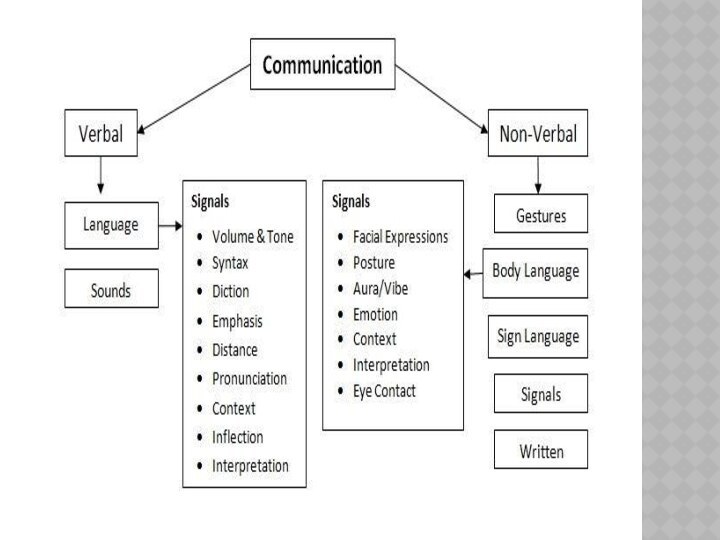face-to-face communication encounters, expressed consciously in the presence of
others and perceived either consciously or unconsciously. Much of non-verbal communication is unintentional people are not even aware that they are sending messages. Non-verbal communication takes place though gestures, facial expressions, eye contact, physical proximity, touching etc. Some important definitions of non-verbal communication are as follows:
According to L. C. Bove and others, “Non-verbal communication is communication that takes place through non-verbal cues: through such form of non-verbal communication as gesture, eye contact, facial expression, clothing and space; and through the non-verbal vocal communication known as Para-language.”
According to Lesikar and Pettit, “Nonverbal communication means all communication that occurs without words (body movements, space, time, touch, voice patterns, color, layout, design of surroundings.)”
According to Himstreet and Baty, “Non-verbal communication includes any communication occurring without the use of words.”






















































